Created in 1998, Family Portrait No. 13 is an exceptional work from Zhang Xiaogang’s series known as the Bloodline - Family Portraits, a body of work that is representative of both Zhang’s maturity as an artist and of the development of Chinese contemporary art by the end of the century as contended by historian and critic Li Xianting.i One of a small number of Family Portraits executed on square canvas, this work is exceedingly rare and has never previously been offered at auction.
This exclusive work was last publicly exhibited shortly after its execution at the critically acclaimed Les Camarades exhibition at the Galerie de France in Paris (1999), Zhang’s first solo show in Europe from which this work was acquired by the present owner. The late 1990s were a significant time in the artist’s career and it was only in 1998 that Zhang began to incorporate hints of a backdrop and engage with childhood imagery in his Family Portraits, differentiating this work from earlier paintings of the series. In Family Portrait No. 13, we see the culmination and refinement of the ideas that had consumed the artist for the past decade in a beautifully sensitive yet arrestingly earnest group portrait.
“Painting should not present itself solely as painting, but through visual means articulate concepts in order to engage the contemporary world.”
— Zhang Xiaogang
Zhang Xiaogang’s Bloodline - Family Portraits series signals a major turning point in his artistic practice, where Zhang’s art can be seen as moving away from his deep introspection of the 1980s—influenced by the Surrealists and Expressionists—and adopting instead a smooth, light aesthetic inspired by the retouched studio photographs of the Maoist era. Awaking from his reverie at the turn of the decade, Zhang embarked on a sincere exploration of humanity and the struggles of the Chinese people, investigating the connection between art and life.
Referring to this change as a ‘return to the human world’,ii Zhang concentrated on relationships between people and the links between the past and the present. Through the pared-down group portraits of his Bloodline series, the artist is telling the history of a nation through the representation of individual family units—evocative of the danwei, state-sanctioned work units—and their psychological states. As the artist states: ‘every individual is a history in his/her own right’.iii While retaining elements of Surrealism, his work matures over the course of the series and his group portraits of the late 1990s, such as Family portrait No. 13, are striking in the sophistication of his iconography and elimination of any expressionistic touches that were present in his early Big Family portraits, as in Bloodline – Family No. 1 (1993).
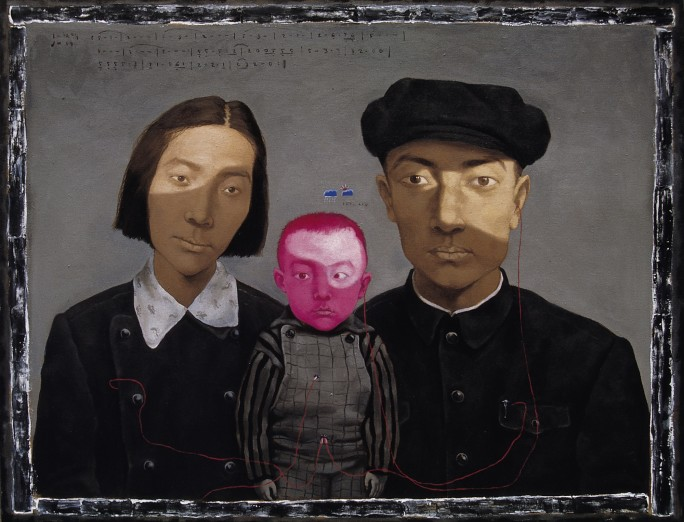
“I cannot really say which nerve deep within me was being touched, but these meticulously retouched studio photographs sent me on endless reveries. Only after a long while did I realise that it was not only the histories behind the photographs that touched me, but also the stylised retouching of the images. In it is embedded the deep-rooted aesthetics of Chinese folk culture, such as its uncertain individual personality, its lyricism, and neutralised sexuality. Furthermore, what ought to have been private in family photography has been standardised and imbued with ideological culture.”
— Zhang Xiaogang
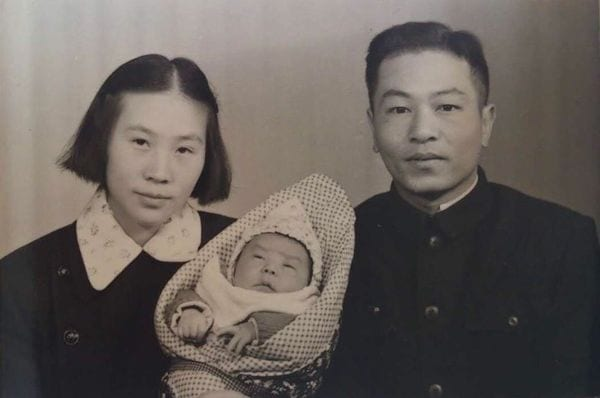
Zhang’s Bloodline series is based on old family photographs, a private medium that would be ‘taken according to a formula that satisfied an official sense of public aesthetics, so presenting an idealistic social model’ under Mao.iv In this way these paintings present fascinating examples of the ‘conflict between the notions of simi hua (private) and gonggong hua (public)’ selves and the standardized presentation, whether unconsciously or consciously, of a conforming “norm”.v As such, we are offered an intimate version of the collective through the replication of Mao’s notion of a big family.
Indeed, Zhang engages in not just an exploration of the inner and outer lives of the Chinese people, but also of himself, working from his own family’s photographs and using his mother as the basis for all the figures in this deeply personal series. The artists states: ‘The image of every figure in my Bloodline series is a variation of my mother — and because they are all the same person, I do not assign a sex to them’.vi
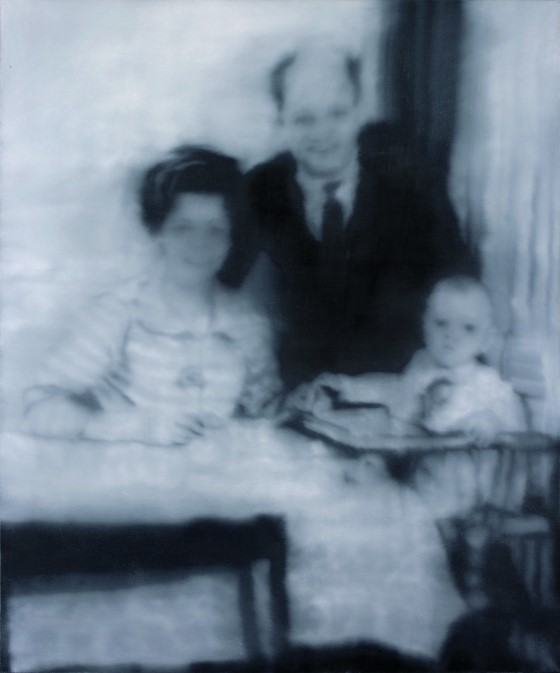
In an exclusive interview with Phillips in April 2018, Zhang Xiaogang highlighted the great influence the German artist Gerhard Richter (b. 1932) had on him as a contemporary artist through the way in which Richter used photographs as more than mere reference points to painting, and instead ‘saw their history and their meaning’.vii Richter’s black-and-white photograph-paintings are imbued with a sense of reality and truthfulness, playing with the sharpness and blur of an actual photograph, despite their medium of oil on canvas.
The impact of works such as The Wende Family (1971) on Zhang are tenable, evidenced by the Chinese contemporary artist’s similar engagement with the nuclear family, especially in the early works of his Bloodline series, his use of monochromatic colors, and adoption of soft light. Furthermore, like Richter’s photograph paintings, Zhang leaves little evidence of the brushstroke in works such as Family Portrait No. 13, consolidating its likeness to an old photograph as if plucked from a family photo album. Overall, the notions of embellishment and refinement were of great interest to Zhang, both of the photograph itself and the history or memories that such photographs reveal.
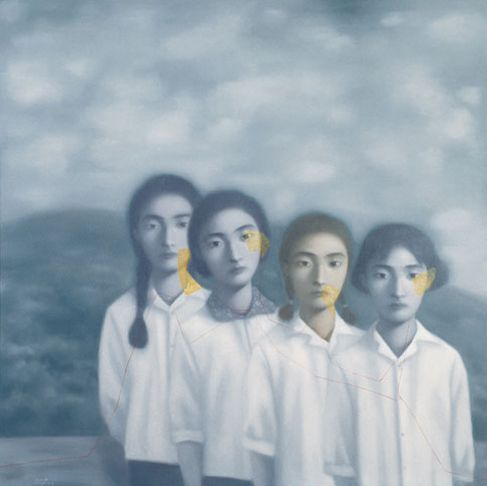
Family Portrait No. 13 invokes the studio portraits of the 1960s and 1970s in China, where families or work units typically sat or stood against a blank background and stare directly at the camera. Panoramic landscapes also became fashionable scenery during this time, and it is difficult to discern whether Zhang is recalling the back sheet of a photography studio or suggesting a cloudy sky in this work, with hazy patches of white blending into the cooler greys in the backdrop.
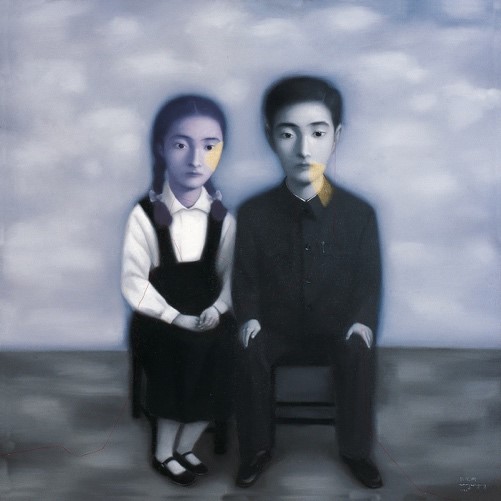
When considered in relation to his other square format works of the same year the interpretation of the background does not become any clearer — while a scenic landscape in the form of a rolling hill emerges in Bloodline: Four Sisters (1998), the two sitters of Bloodline: Young Couple (1998) appear to sit inside a photography studio. Overall, the unique square canvas of this Family Portrait No. 13 is suggestive of the square format photography that was a popular medium at this time.
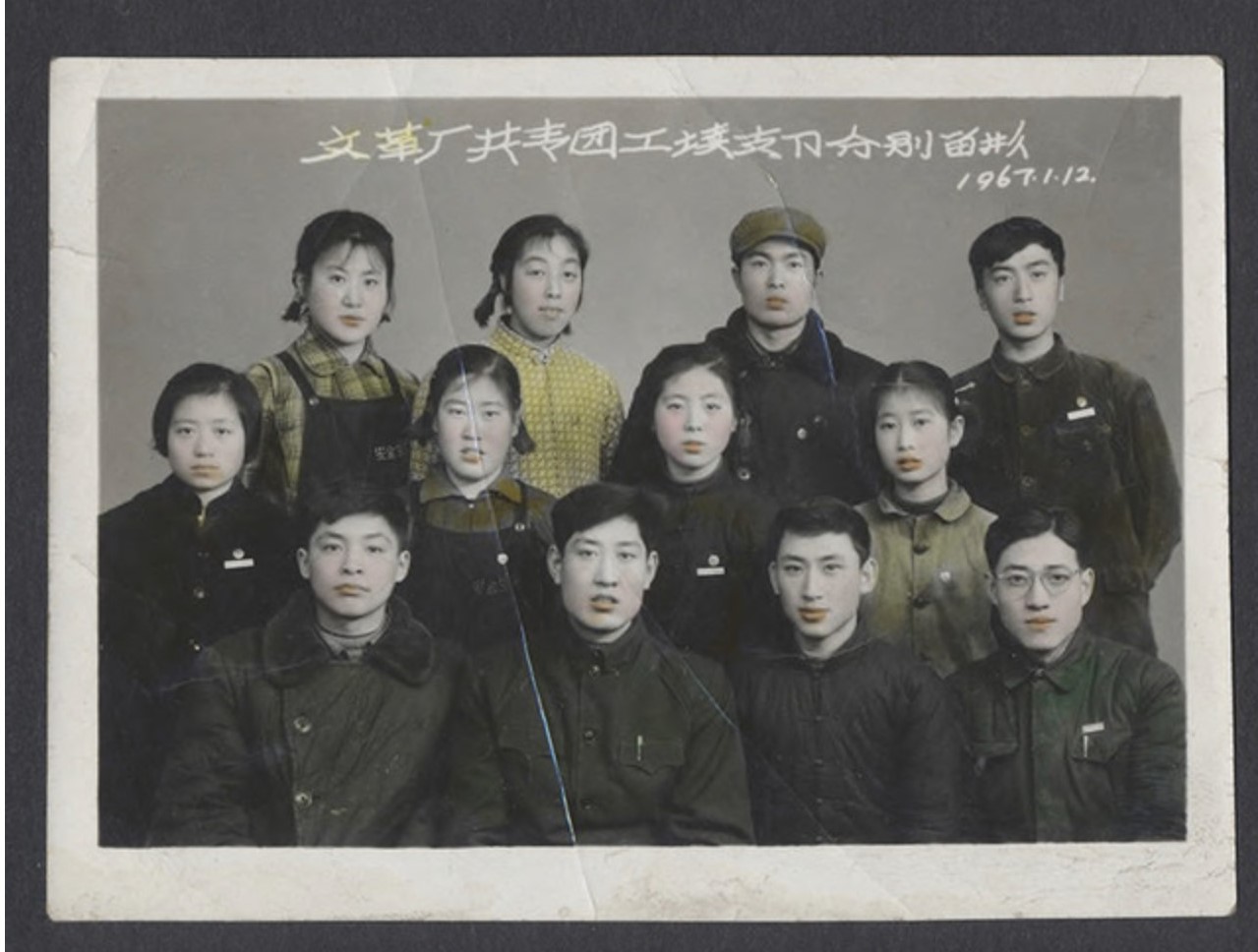
Zhang dresses his characters in the official outfitsof the period, symbolic of revolutionary China as a whole. Clothed in the androgynous apparel that professor of Chinese history Antonia Finnane has described as typical of women’s style during the Maoist era, the middle figure wears a grey, buttoned up, and collared jacket that is simple and practical.viii In the foreground, the two figures are dressed in the standard uniforms of school children—recalling the childhood of Zhang’s generation—arousing an element of nostalgia and stimulating collective memory.
Such clothes can be seen in countless photographs and posters from the 60s and 70s, such as the illustrated example of a studio photograph of a group of young factory workers from 1967, in which the woman sitting at the right-hand side of the middle row wears a similar grey button-up jacket to the central figure of Zhang’s Family Portrait No. 13. Popular posters such as Sun Zhongxiang and Lu Yezi’s depiction of two school children from 1965 portray the white shirts and scarlet red ties habitually worn by boys and the common double braids of the girls, which Zhang replicates in Family Portrait No. 13.
Both the photograph and poster are classic examples of their genre, perpetuating a standardized image that became recognizable state aesthetics. These clothes are culturally symbolic through their replication in popular culture, which Zhang has often drawn upon in his oeuvre and as seen in his series based on the 1964 movie, Heroic Sons and Daughters, a rich cinematic example of revolutionary aesthetics.
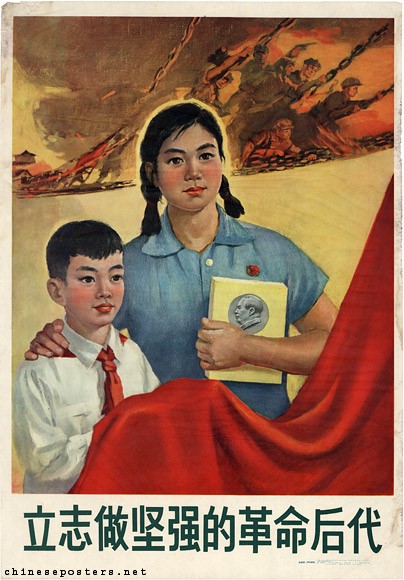
Red and yellow are important colours that surface throughout Zhang’s oeuvre and hold great cultural significance. Considered China’s national colours, the dichotomy of red and yellow are a direct link to the founding of China and are loaded with historic significance. Traditionally worn by emperors, yellow has long been considered a royal colour in China and representative of power and authority. Additionally, red is regarded as auspicious, bright, full of warmth and life.
Throughout Bloodlines, Zhang incorporates these two colours into his group portraits, often infusing a single figure of the group with one of these two vitalizing hues. In Family Portrait No. 13, the central figure glows a golden yellow, perhaps signifying a strong nationalist spirit and an authoritative leader for this new generation. The effect of adding pigment to an individual in an otherwise monochromatic composition is striking and ties this painting with other works of the series, such as Day Sale Lot 196 - Zhang Xiaogang, Yellow Baby (1998).
Complementary to the yellow figure, the bright red tie of the boy serves as a powerful accent in the painting, creating a dynamic disruption to Zhang’s predominantly muted palette. Interestingly, it was common practice for studios of the 1960s and 70s to tint their photographs, imbuing the image with coloured elements and achieving a similar quality to the effect created by Zhang in his painting. As with Family Portrait No.13, in which the sombre shades of grey are invigorated with vibrant details of red and yellow, photographs such as that of the young factory workers in 1967 include coloured elements that add a vital energy to the otherwise rigid composition.
The three figures of Family Portrait No. 13 stare out directly at the viewer as if through a palpable mist, in a manner that is both passive yet confronting that creates an unusual dynamic and evokes an air of uneasiness. Particular to this work is Zhang’s departure from the typical three-person family unit of his early Family Portrait works, inverting the traditional two-to-one structure (two figures stand behind the one in the fore) as seen in the likes of Family No. 1 (1993) and rendering ambiguous the third enlarged figure who stands behind—whether a young mother, an older sister or a teacher, it is not known.
Perhaps most intriguing is the way in which Zhang uses the same face for each of the three figures, making only minor tweaks to the individual children, such as the visible teeth of the girl to the floppy hairline of the boy. The effect of this, combined with the patches of yellow light that are of the natural world and yet are pasted artificially onto the face of each character, adds to the otherworldly nature of the painting. This image carries a strong psychoanalytic energy and is reminiscent of Freud’s interpretation of the uncanny, which he describes as ‘produced when the distinction between imagination and reality is effaced, as when something that we have hitherto regarded as imaginary appears before us in reality’.ix While their clothes and hairstyles are suggestive of conventional gender norms, Zhang’s modification of the image of his mother render these characters sexless, and thus a possible embodiment of the Freudian imaginary.
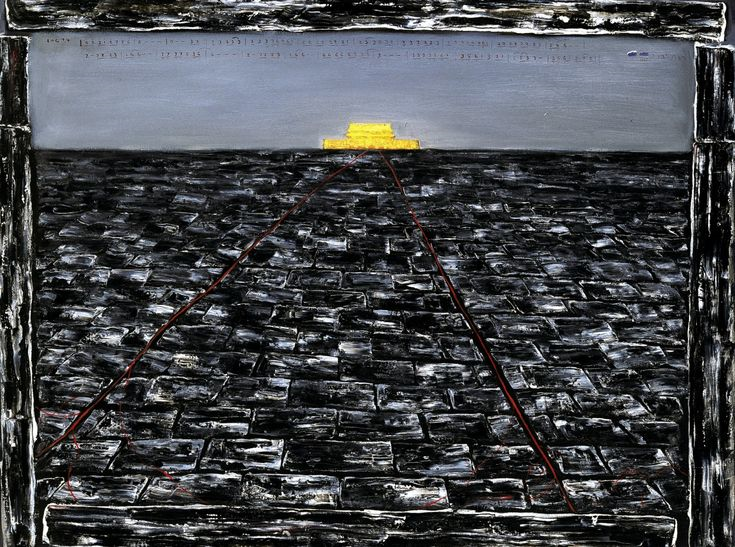
The clear crimson bloodlines of Family Portrait No. 13 cut through the soft haze of the painting, emerging from various crevices, disappearing under collars, advancing into and retreating from the square canvas. While a familiar relationship is suggested by their similar appearance, it is these bloodlines that undeniably unite these characters. Looking at the series as a whole, it is arguable that the bloodlines of the series stem from the Forbidden City, as depicted in Tiananmen (1993), the unifying element of China’s collective identity as a site of national and historical importance.
In Tiananmen, the Forbidden City is depicted on the horizon line, glowing amongst the subdued monochrome tones of the surrounding composition. It appears from this painting that this is the home of the unseen heart of the nation, from which the bloodlines speed out across the tiles of the square, branching out into infinite bloodlines that extend outside of the canvas’ border and into the subsequent Bloodline paintings. These bloodlines, which recall the Surrealist works of Frida Kahlo which share the same motif, enter Family Portrait No. 13 and serve as tangible links between the characters of the group and to their past while reinforcing the magical quality of this painting by Zhang Xiaogang, a true artistic titan of his generation.
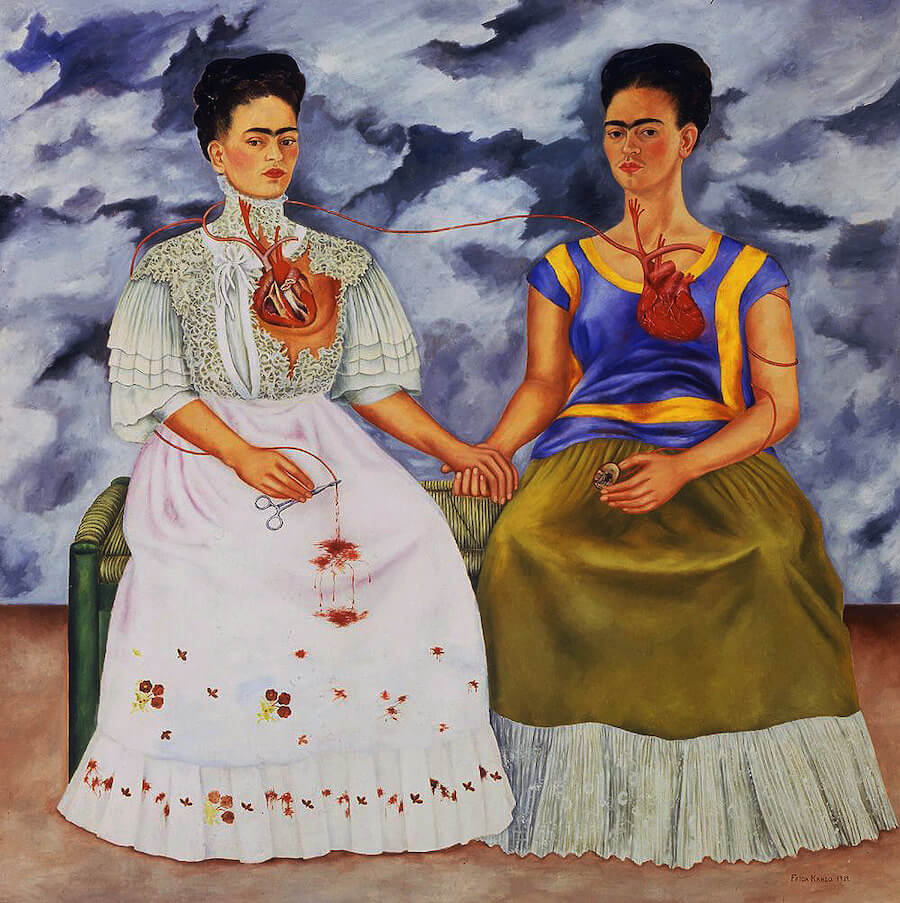
Zhang’s Bloodlines catapulted the artist onto the international stage, attracting both critical and popular acclaim and establishing him as one of the Greats of Chinese contemporary art. In June 1994, four paintings of the series were exhibited at the São Paulo Biennale, a major feat for the artist, who went on to win a bronze medal for these works. The following year Zhang exhibited 13 large Big Family paintings at the Venice Biennale, marking the beginning of extensive international exhibitions and a distinguished and prolific career.